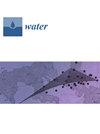开发和运行冰冻冰塞洪水预报系统的要求
IF 3
3区 环境科学与生态学
Q2 ENVIRONMENTAL SCIENCES
引用次数: 0
摘要
本文全面概述了适用于冻结期河流的冰塞洪水预报方法。文章强调了了解河流结冰过程和河道地貌对于开发冰冻期冰塞洪水预报系统的重要性。文章展示了一种随机建模方法,即多次模拟确定性河冰模型,并改变参数和边界条件。这种方法已应用于加拿大纽芬兰省 Badger 的 Exploits 河,该河流曾多次经历冰冻冰塞洪水。预测包括两种方法:预测河流冻结期间的冰盖范围,以及使用集合方法确定回水洪水位高程。此外,还介绍了目前正在运行的 Kokemäenjoki河(芬兰波里)、圣约翰河(加拿大新不伦瑞克省埃德蒙顿)和丘吉尔河(加拿大新不伦瑞克省泥湖)冰塞洪水预报系统的其他示例。文中详细解释了河流冻结和冰塞形成的过程,以及用于冻结冰塞洪水预报的方法。将用于封冻的冰塞洪水预报系统与用于春汛的冰塞洪水预报系统进行了比较。春季断裂和冻结期冰塞洪水预报系统在驱动因素和方法上有所不同。春汛由融雪径流驱动,通常依靠确定性和概率性方法来预测洪峰流量。冰冻期由低温驱动,侧重于大气条件、河流流量和冰的动态之间复杂的相互作用。这两个系统都需要气温预测,但积雪数据对于春冻预测更为重要。为了考虑不确定性,这两种方法都可能采用集合预报技术,利用略有不同的初始条件或模型参数生成多个预报。本综述旨在概述目前最先进的冰塞洪水预报系统,找出现有冰塞洪水预报方法的不足和需要改进的地方,重点是提高其准确性、可靠性和决策潜力。总之,一个有效的冻结冰塞洪水预报系统需要实时数据收集和分析、历史数据分析、冰塞建模、用户界面设计、警报系统以及与其他相关系统的集成。这种组合可使操作人员更好地了解冰塞行为,并就潜在风险或缓解措施做出明智决策,以保护沿河人员和财产安全。本次审查的主要结论如下:(i) 冰塞洪水预报系统通常基于简单的经验模型,严重依赖历史数据和有限的实时监测信息。(ii) 需要更复杂的建模技术,以更好地捕捉冰盖、水位和河道几何之间复杂的相互作用。(iii) 将卫星图像、地面传感器、数值模型和机器学习算法等多种来源的数据结合起来,可以大大提高冰塞洪水预报的准确性和可靠性。(iv) 有效的决策支持工具对于将冰塞洪水预报纳入应急和减灾战略至关重要。本文章由计算机程序翻译,如有差异,请以英文原文为准。
Requirements for the Development and Operation of a Freeze-Up Ice-Jam Flood Forecasting System
This article provides a comprehensive overview of ice-jam flood forecasting methodologies applicable to rivers during freezing. It emphasizes the importance of understanding river ice processes and fluvial geomorphology for developing a freeze-up ice-jam flood forecasting system. The article showcases a stochastic modelling approach, which involves simulating a deterministic river ice model multiple times with varying parameters and boundary conditions. This approach has been applied to the Exploits River at Badger in Newfoundland, Canada, a river that has experienced several freeze-up ice-jam floods. The forecasting involves two approaches: predicting the extent of the ice cover during river freezing and using an ensemble method to determine backwater flood level elevations. Other examples of current ice-jam flood forecasting systems for the Kokemäenjoki River (Pori, Finland), Saint John River (Edmundston, NB, Canada), and Churchill River (Mud Lake, NL, Canada) that are operational are also presented. The text provides a detailed explanation of the processes involved in river freeze-up and ice-jam formation, as well as the methodologies used for freeze-up ice-jam flood forecasting. Ice-jam flood forecasting systems used for freeze-up were compared to those employed for spring breakup. Spring breakup and freeze-up ice-jam flood forecasting systems differ in their driving factors and methodologies. Spring breakup, driven by snowmelt runoff, typically relies on deterministic and probabilistic approaches to predict peak flows. Freeze-up, driven by cold temperatures, focuses on the complex interactions between atmospheric conditions, river flow, and ice dynamics. Both systems require air temperature forecasts, but snowpack data are more crucial for spring breakup forecasting. To account for uncertainty, both approaches may employ ensemble forecasting techniques, generating multiple forecasts using slightly different initial conditions or model parameters. The objective of this review is to provide an overview of the current state-of-the-art in ice-jam flood forecasting systems and to identify gaps and areas for improvement in existing ice-jam flood forecasting approaches, with a focus on enhancing their accuracy, reliability, and decision-making potential. In conclusion, an effective freeze-up ice-jam flood forecasting system requires real-time data collection and analysis, historical data analysis, ice jam modeling, user interface design, alert systems, and integration with other relevant systems. This combination allows operators to better understand ice jam behavior and make informed decisions about potential risks or mitigation measures to protect people and property along rivers. The key findings of this review are as follows: (i) Ice-jam flood forecasting systems are often based on simple, empirical models that rely heavily on historical data and limited real-time monitoring information. (ii) There is a need for more sophisticated modeling techniques that can better capture the complex interactions between ice cover, water levels, and channel geometry. (iii) Combining data from multiple sources such as satellite imagery, ground-based sensors, numerical models, and machine learning algorithms can significantly improve the accuracy and reliability of ice-jam flood forecasts. (iv) Effective decision-support tools are crucial for integrating ice-jam flood forecasts into emergency response and mitigation strategies.
求助全文
通过发布文献求助,成功后即可免费获取论文全文。
去求助
来源期刊

Water
WATER RESOURCES-
CiteScore
5.80
自引率
14.70%
发文量
3491
审稿时长
19.85 days
期刊介绍:
Water (ISSN 2073-4441) is an international and cross-disciplinary scholarly journal covering all aspects of water including water science and technology, and the hydrology, ecology and management of water resources. It publishes regular research papers, critical reviews and short communications, and there is no restriction on the length of the papers. Our aim is to encourage scientists to publish their experimental and theoretical research in as much detail as possible. Full experimental and/or methodical details must be provided for research articles. Computed data or files regarding the full details of the experimental procedure, if unable to be published in a normal way, can be deposited as supplementary material.
 求助内容:
求助内容: 应助结果提醒方式:
应助结果提醒方式:


